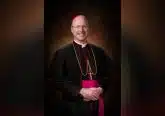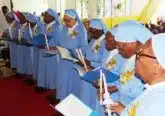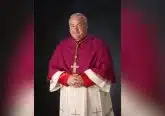Pope Francis’ Brazilian pick for cardinal urges openness to ordaining married priests in region
Vatican City, Oct 10, 2024 / 12:20 pm
Brazilian Archbishop Jaime Spengler, OFM, one of the 21 men chosen by Pope Francis to become a cardinal in the next consistory on Dec. 8, confirmed plans for a trial run of an Amazonian rite of the Mass and urged “openness” to the idea of married priests to serve certain communities facing a shortage of priests.
The 64-year-old is a prominent figure in the Church in his home country and throughout South America, heading both the Catholic bishops’ conference of Brazil and the Latin American bishops’ conference (CELAM).
A descendant of German immigrants, Spengler has been a member of the Franciscan Order of Friars Minor for more than 40 years and a priest for almost 34 years.
After serving as auxiliary bishop of Porto Alegre for two and a half years, Pope Francis tapped him in 2013 to lead the archdiocese, making him the youngest archbishop in Brazil at the time, having just turned 53.
The Archdiocese of Porto Alegre, which covers the capital city of the southernmost state of Brazil, serves over 2 million Catholics spread across more than 13,000 square kilometers (more than 5,000 square miles), according to 2021 Vatican statistics.
With just 300-some priests, the archdiocese has had to explore ways of overcoming the challenges posed by a priest shortage — a problem faced by much of the Catholic Church in Latin America.
Spengler once again indicated he is open to ordaining married men, so-called “viri probati,” to serve as priests — a subject much debated during the Vatican’s Amazon synod in 2019.
The archbishop and future cardinal said at a briefing for the Synod on Synodality at the Vatican Oct. 8 that his archdiocese is “investing in permanent deacons: Maybe in the future these married men could also be ordained as priests for a specific community.”
The issue of the priestly ordination of married men — currently not allowed by Church discipline in the Latin rite — is “delicate,” Spengler noted. “I don’t know if it could be the best solution to the shortage of priests, but we need frankness and openness to deal with it. It’s a journey.”
“I don’t have prepackaged answers,” he continued. “We can and must face the issue with courage, keeping in mind theology but also grasping the signs of the times.”
Spengler, who has a doctorate in philosophy from the Pontifical University Antonianum in Rome, was born in Gaspar in the state of Santa Caterina, just north of where he now lives in the state of Rio Grande do Sul.
Santa Caterina is the source of a lot of Brazil’s priestly vocations and also the birthplace of two of the most influential figures in liberation theology: the late archbishop of São Paulo, Paulo Evaristo Arns, OFM, and theologian Leonardo Boff, a former Catholic priest and one of the founders of the movement, which gained popularity in the 1970s and emphasized freedom from poverty and oppression as the key to salvation.
Spengler has also supported an Amazonian rite of the Mass, something that has been under study since the 2019 Amazon Synod. A three-year experimental phase of an Amazonian rite will begin before the end of this year, according to Father Agenor Brighenti, a priest leading the Amazonian bishops’ (CEAMA) study of an Amazonian rite.
Brighenti, one of the Synod on Synodality’s theology experts, is also the new head of the theological-pastoral team of CELAM.
Responding to a question, Spengler confirmed at the Oct. 8 Vatican briefing that there is a group in the Amazon bishops’ conference working on creating an Amazonian rite of the Mass but added that he thinks it could also be easier to explore ways of inculturating the Latin rite of the Mass instead.
The Brazilian cardinal-designate tied the need to have a Mass that reflects Amazonian culture in some way to a lack of access to the Eucharist in some remote areas of the Amazon.
“Today in the Latin Church we have the Roman rite, and the Roman rite must be inculturated in the different realities,” he said. “Personally I think we can explore this possibility in a more in-depth manner … Of course, this requires a special sensitivity and attention on the part of the involved parties, and also a readiness to find a way, a journey.”
The future cardinal also said a challenge for the Church in traditionally Christian countries such as Brazil is how to present the faith to the next generation.
The remarks echoed comments Spengler made during a different synod, the 2018 synod on young people, faith, and vocational discernment. As a delegate to the youth synod, Spengler told journalists he thought the question of transmitting religious values to young people was at the foundation of all the bishops’ debates.
In the context of the current synod, Spengler is among those who see deep connections between the Second Vatican Council and the push for a more synodal Church.
The Synod of Synodality is “an opportunity to rescue the main lines of the Second Vatican Council,” the archbishop said in a letter to the Brazilian bishops’ conference this week.
“In truth, it is about developing the intuitions of the council fathers and finding viable ways to implement them,” he wrote to the bishops, noting that they should not fear controversies, which are only “part of the process.”













